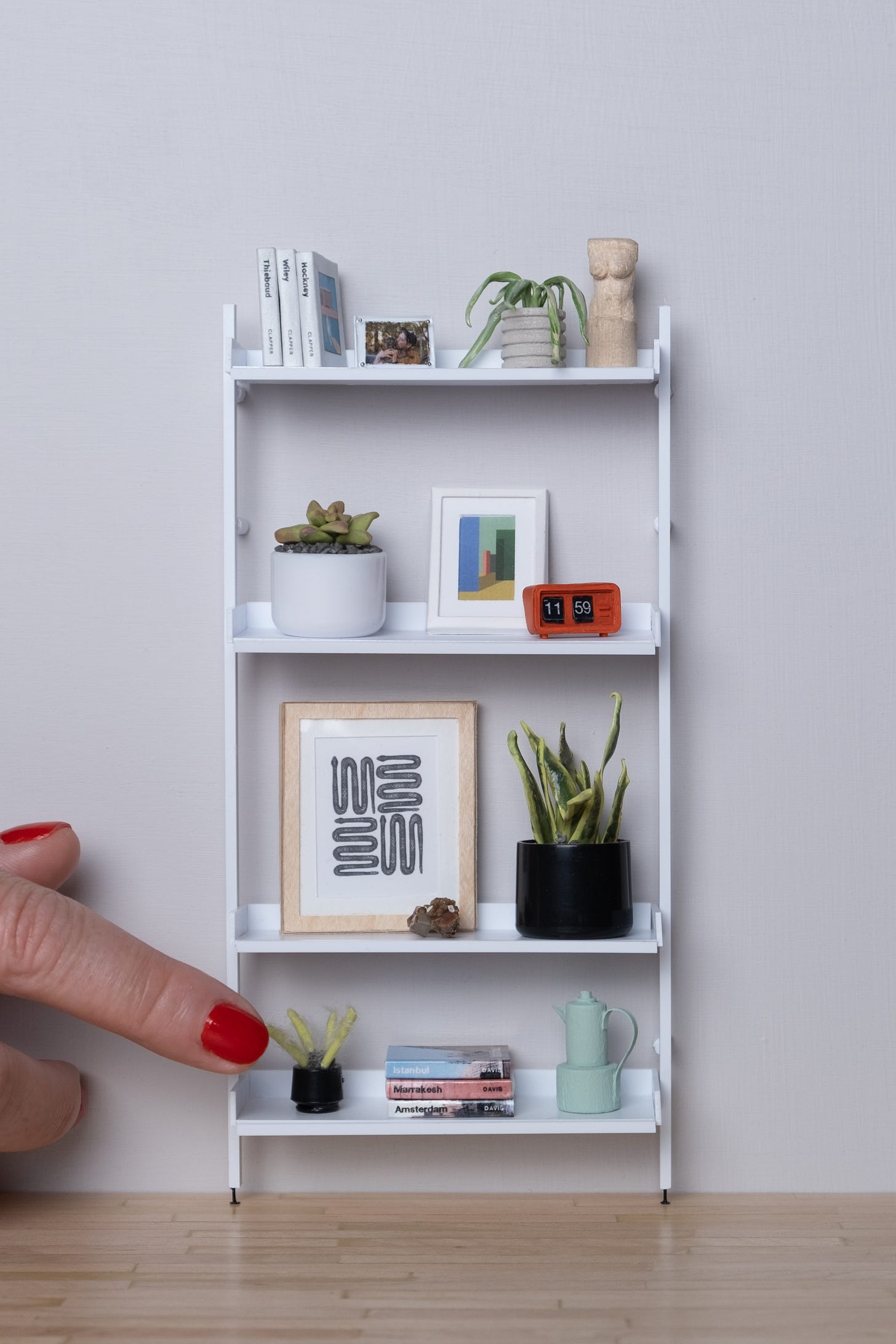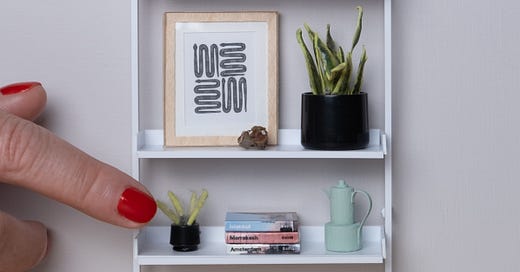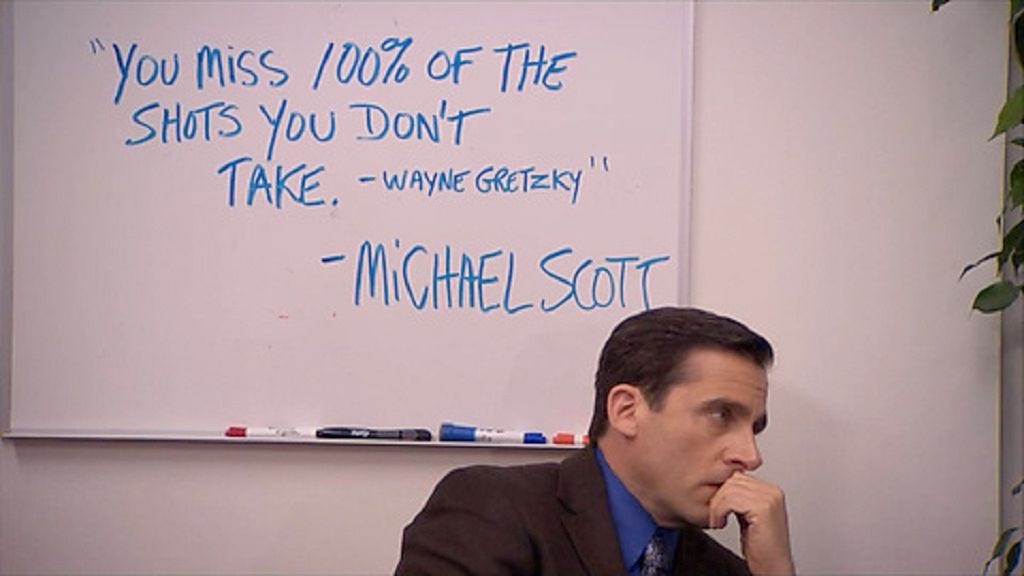I highly recommend the act of “putting pen to paper” (or, more accurately, clickety-clacking on a keyboard) for anyone starting a company—or exploring any idea for that matter. Last week I wrote about writing a memo for Practice. It still needs revision, but it was such a valuable exercise for me and Ben. Partially because it helped convert months of conversation and ideas to life.
I’ll admit, I’m biased. Making ideas tangible is one of my favorite things to do. Ideas on their own are exciting, but they are fragile, ambiguous things. It’s only when they’re expressed that they gain the power to evoke emotion, raise questions, highlight discrepancies, illuminate gaps, and—dreaming big here—change the world.
Externalizing an idea into a shareable format feels like magic: you convert abstract brain soup into something others can experience and examine. You transform an idea from something fleeting into something with shape and form. It’s exhilarating!

Sometimes, an idea loses its luster when it’s expressed. If you still believe in it, you might try iterating and bringing it to life in a new way, but sometimes it just isn’t a great idea—and that’s okay! Other times, an idea may seem really, really good. It’s got legs! But when expressed, it’s no longer safely nurtured in your head—it’s exposed, and it can feel like an extension of you. This exposure makes both the idea and you vulnerable to critique.
I recognize that facing critique isn’t comfortable for everyone, and it can be a deterrent to sharing ideas. Like many things in life, it takes practice. I’m grateful to have gained a lot of experience with critique as an art student, and I’ve continued to get more practice throughout my career as a designer.
The power of critique
If you’ve never been part of an art school critique, it goes something like this: students work on a project, pin it up on the wall, and one by one, each student shares a bit about their work and receives feedback from peers and the professor. You usually learn something about your work (and maybe yourself) and gain insights from others' critiques as well. The process normalizes vulnerability, humility, and a Zen-like attitude towards sharing ideas. It also teaches you how to give and receive actionable feedback.
Sometimes, I’d pin up my work feeling nervous, knowing it wasn’t my best idea or execution, bracing myself for feedback. Other times, I’d feel nervous for a different reason: I believed the work was great and hoped others would agree. It was a lot to handle as a fledgling 18-year-old, but I’m so glad I had that experience then, throughout my four years of college, and then as a design professional.
Over time, my pre-critique jitters have turned into excitement. Even a negative, unexpected critique can be powerful, providing insights that help improve how you express an idea—whether by strengthening your craft, making new connections, sticking to your gut, or finding inspiration. Not all ideas are good. Not all critiques are easy. But I learned that even bad ideas and tough critiques can teach you something.
That’s feedback…take it
Growing up, I remember thinking that having a bad idea or being wrong—and admitting it—was a negative thing. It was a sign of weakness or incompetence. Critiques helped me recognize that it’s actually really strong and smart to share an idea that isn’t fully realized and it’s okay to be “wrong.” I’d much rather get ripped apart in a critique (or a user feedback session!) and learn something than keep ideas in a soupy form.
Thankfully, humility and vulnerability seem more valued in leadership and life now, so I hope that even if you didn’t experience art critiques, you still welcome feedback and feel okay with being wrong sometimes. As cliché as it sounds, I believe that all feedback is a gift. You usually learn something from it, and you can often use that feedback to make things better.
If expressing ideas and facing the inevitable critiques that follow makes you nervous, I highly recommend practicing a bit…perhaps with a low-stakes creative hobby 😉
Pinning up our memo
Oops, I didn’t mean to get on a preachy soapbox and blab about critiques this week, but here we are. What I intended to do was share the first page of our memo and invite more people to poke holes, offer feedback, and help us improve our ideas. Thanks to those who’ve already volunteered to provide feedback! Let me know at erica@practicemaking.com if you’d like to join them. Your feedback is truly a gift.
Now without further ado, check out an excerpt from the Practice memo below ⤵️
Introduction
Society is suffering from an epidemic of stress, burnout, and doomscrolling, but a simple and accessible antidote exists: creative hobbies. They are a sustainable source of calm and peace, and a way for anyone to transform their life for the better.
This is why we’ve created Practice: an online community and resource that helps people create joy and reduce burnout through creative hobbies.
The Problem
Stress and burnout affect nearly 50% of the U.S. workforce. With limited downtime often consumed by passive, consumptive activities—doomscrolling, phone addiction, Netflix—stress and harm increases. There’s a simple, accessible antidote to stress and burnout: creative hobbies. They are scientifically proven to reduce cortisol levels, stimulate neuroplasticity, trigger flow state (which causes the brain to produce dopamine, anandamide, and serotonin), create balance in the autonomic nervous system, lower heart rate and blood pressure, shift focus away from chronic pain, and other benefits. Crafts are a drug-free “wonder drug” that anyone can tap into to improve their life for the better. But, there is low awareness that if you swap 15 minutes of Netflix for a 15-minute creative hobby session, you can bring joy, flow, and meaning to your life, counteracting stress and burnout and improving well-being.
While creative hobbies are somewhat common (67 million U.S. households do crafts today), they aren’t accessible to all adults. Many people enjoy creative activities as children but tend to abandon them around the age of nine, in part due to self-consciousness and the low value perception of art making and handwork versus other academic and life pursuits. Some adults self-identify as “not creative” and may then be less likely to have a creative hobby. But even if they move past that barrier, it can be hard to find the right hobby + entry point as adults since achieving the right mix of skill and challenge is key to reaping the full benefits of creative making—otherwise, people get bored (if it’s too easy) or frustrated (if it’s too hard), rather than experiencing flow and joy.
When adults engage in creative hobbies, they may feel it’s frivolous or think the hobby must be monetized to have value. Unlike exercise or meditation, “time spent making” isn’t widely recognized as beneficial or a form of self-care. After a tough day, it’s commonplace to go for a run or drink a glass of wine to unwind, but you can get a similar dopamine boost from a few minutes of knitting or building a scale model. Etsy and other platforms have made it easier for people to profit from their craft activities, but have also perpetuated a capitalistic idea that the purpose of making things is for financial gain rather than a means to make joy.
While many apps support healthy habit building (e.g. losing weight with Noom, learning a new language with Duolingo), before we started Practice there was no software dedicated to cultivating a sustained creative practice, helping hobbyists set goals and milestones, track progress, or get inspiration. No tool exists that elevates creative hobbies to the level that Strava does for cycling or running.
This is why Practice exists. We help people make joy.
Want to read more of the memo? Want to share feedback?
Email me at erica@practicemaking.com





